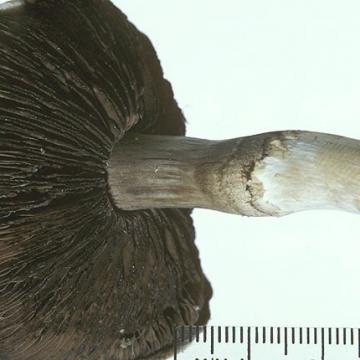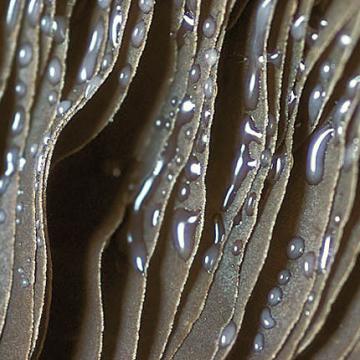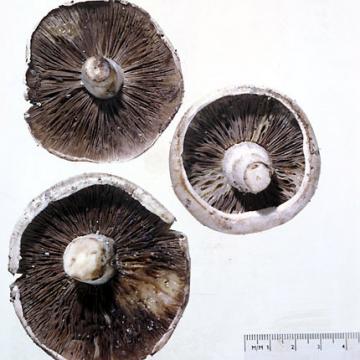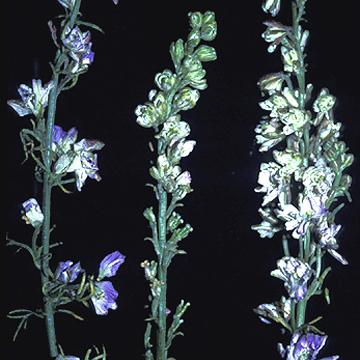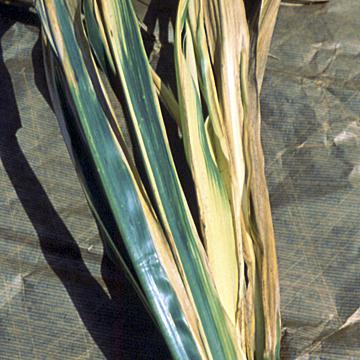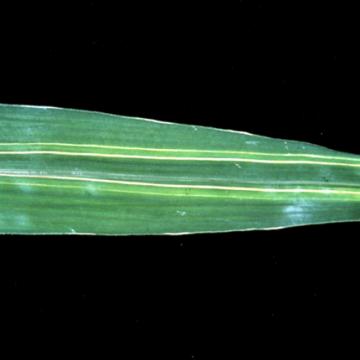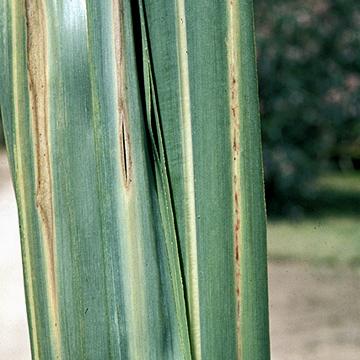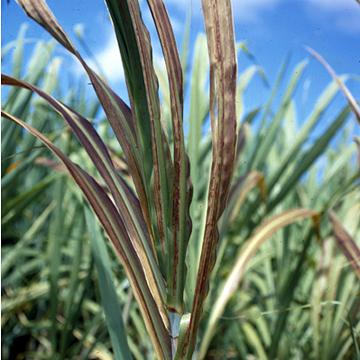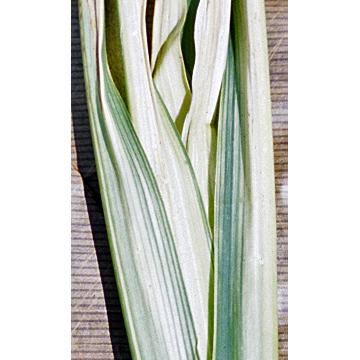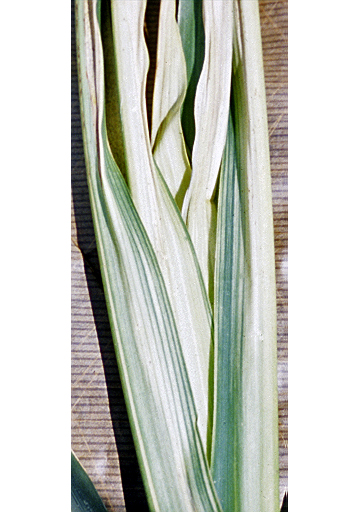DISEASE: Drippy gill
HOST: Mushroom
Drippy gill is characterized by small dark spots on gills with drops of bacterial ooze at the centers. Severe infection results in slimy areas and collapse of gills.
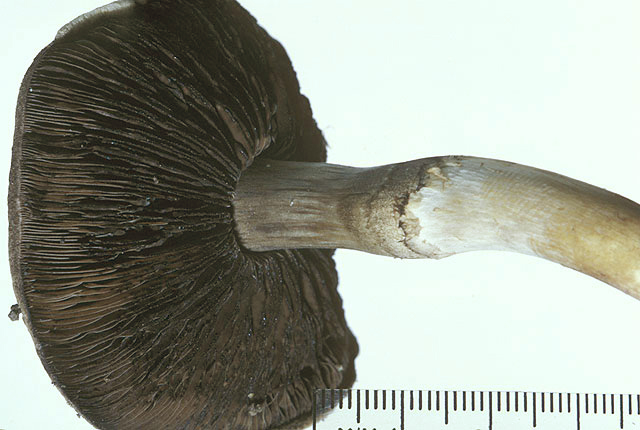
Drippy gill | Mushroom
DISEASE: Drippy gill
HOST: Mushroom (Agaricus campestris)
PATHOGEN: Pseudomonas agarici
SOURCE: J. Young
DISEASE: Drippy gill
HOST: Mushroom
Close-up of infected gills with bacterial ooze.
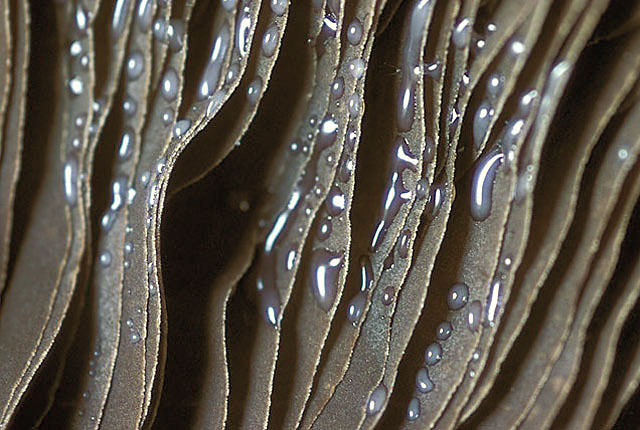
Drippy gill | Mushroom
DISEASE: Drippy gill
HOST: Mushroom (Agaricus campestris)
PATHOGEN: Pseudomonas agarici
SOURCE: J. Young
DISEASE: Drippy gill
HOST: Mushroom
Another view of small, dark spots on gills.
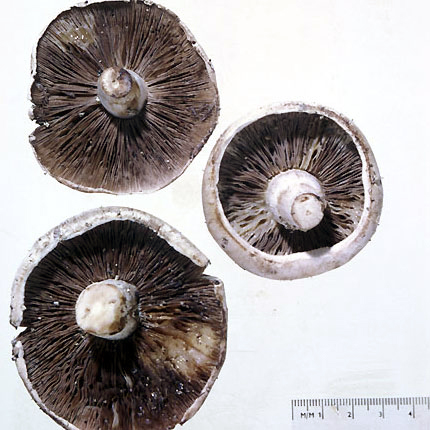
Drippy gill | Mushroom
DISEASE: Drippy gill
HOST: Mushroom (Agaricus campestris)
PATHOGEN: Pseudomonas agarici
SOURCE: J. Young
DISEASE: Larkspur virescence
HOST: Larkspur
Two diseased plants with stunted and small leaves, lack of flower coloration, and bunched flower buds. Healthy plant (left).
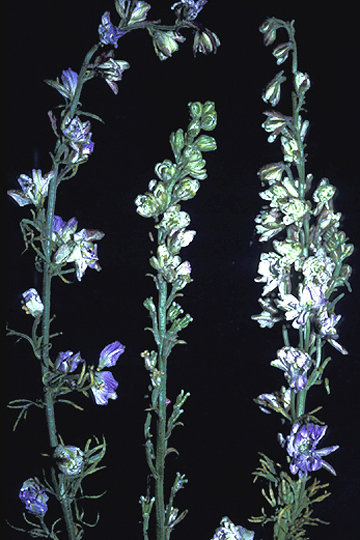
Larkspur virescence | Larkspur
DISEASE: Larkspur virescence
HOST: Larkspur (Delphinium sp.)
PATHOGEN: 'Candidatus Phytoplasma asteris'
PATHOGEN SYNONYM: Phytoplasma Aster yellows group
SOURCE: R. Raabe
DISEASE: Leaf scald
HOST: Sugarcane
Leaf symptoms of chlorosis and white, "pencil-line" streaks.
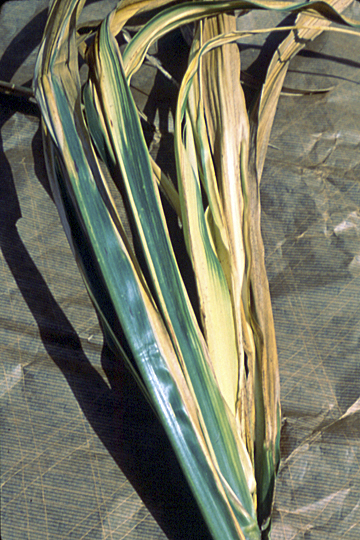
Leaf scald | Sugarcane
DISEASE: Leaf scald
HOST: Sugarcane (Saccharum officinarum)
PATHOGEN: Xanthomonas albilineans
SOURCE: R. Birch
DISEASE: Leaf scald
HOST: Sugarcane
Early stage of disease with white, "pencil-line" streaks on leaf.
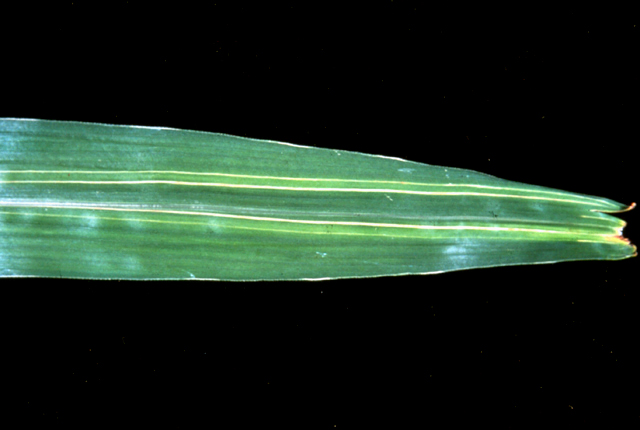
Leaf scald | Sugarcane
DISEASE: Leaf scald
HOST: Sugarcane (Saccharum officinarum)
PATHOGEN: Xanthomonas albilineans
SOURCE: R. Birch
DISEASE: Leaf scald
HOST: Sugarcane
Leaf with brownish necrotic streaks, some reddish.
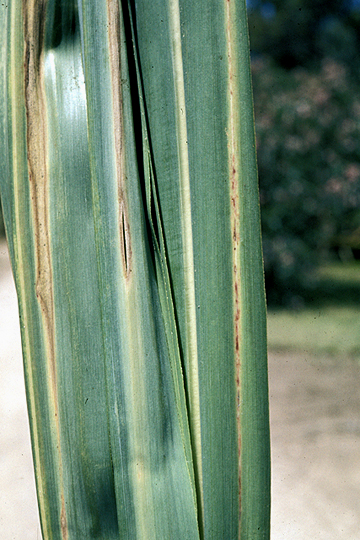
Leaf scald | Sugarcane
DISEASE: Leaf scald
HOST: Sugarcane (Saccharum officinarum)
PATHOGEN: Xanthomonas albilineans
SOURCE: D. Teakle
DISEASE: Leaf scald
HOST: Sugarcane
Advanced stage of disease with brownish red necrotic streaks covering most of the leaf surface.
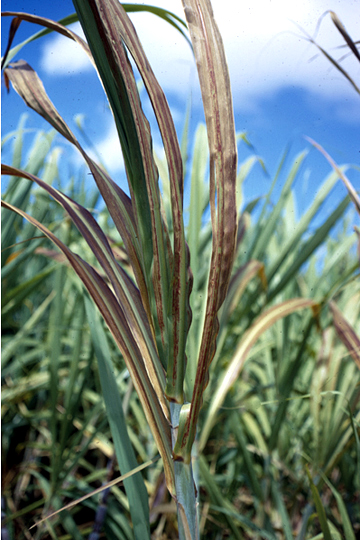
Leaf scald | Sugarcane
DISEASE: Leaf scald
HOST: Sugarcane (Saccharum officinarum)
PATHOGEN: Xanthomonas albilineans
SOURCE: S. Schenk


